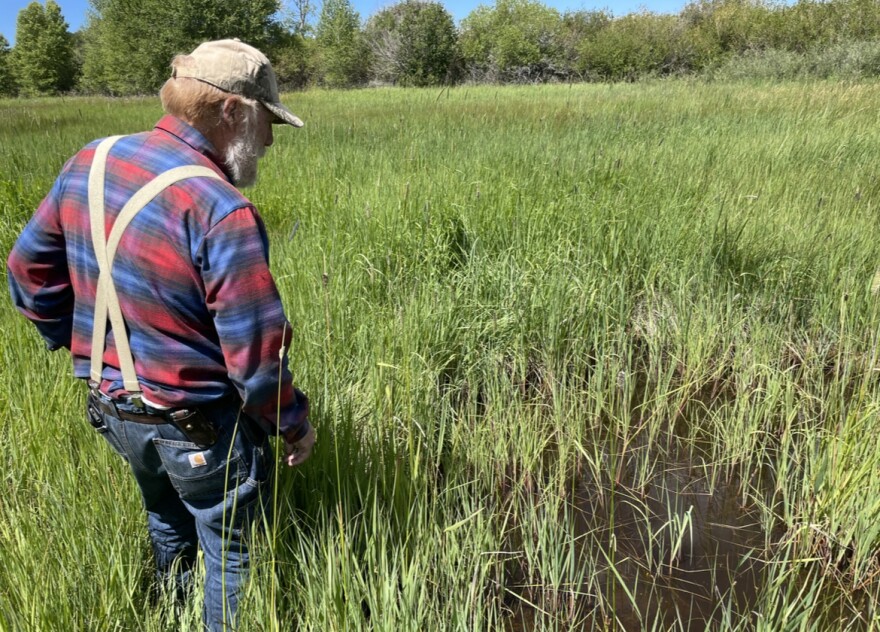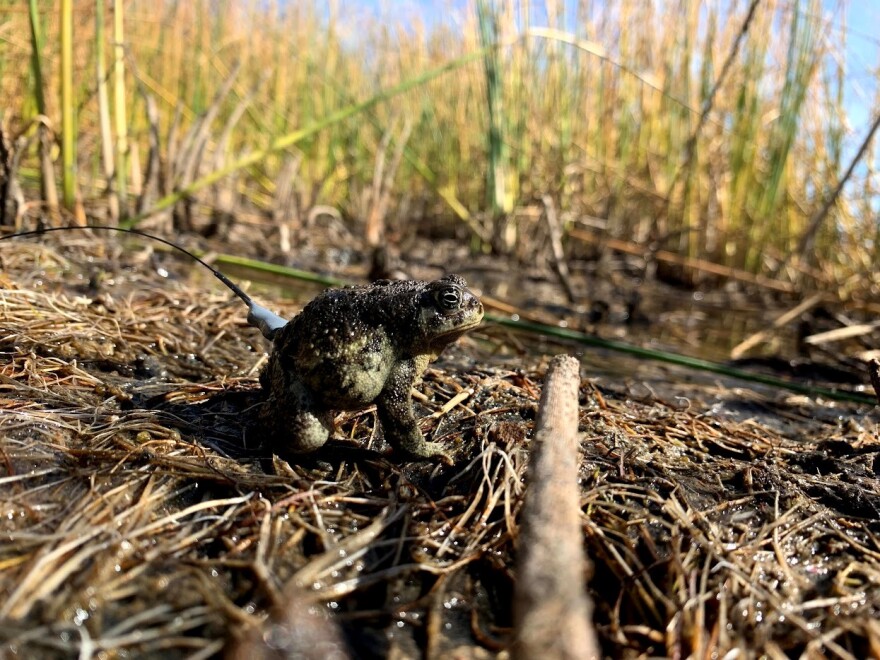Fred Lindzey and his wife Stephanie call 140 acres of farmland just west of Laramie home. Their property is full of meadows, temporary ponds, and even a small stream. Their main crop is hay, but that is not the only thing they are helping to grow.
According to Fred, it’s not easy to spot the Wyoming toad while walking around their property.
“So, you’ve got to ask yourself, ’Can I find something about the size of a 50 cent piece or silver dollar scrunched down to the ground and color like the ground?’ The answer is it's not easy,” he said.
However, it is easier to find the toad here than almost anywhere else. That is because the Lindzeys are part of a small group of landowners who are helping the endangered species make a comeback.
Rachel Arrick, who works for the U.S. Fish and Wildlife Service (USFW) is the coordinator of the Wyoming Toad Recovery Team. It is the main group spearheading the recovery efforts. The team includes members from USFW, the Wyoming Game and Fish Department, the University of Wyoming, the Laramie Rivers Conservation District and more.
The animal is native to the Laramie River Basin, and just 50 years ago it was not endangered at all. The toads were important to the local ecosystem, both as prey and predators.
“They also helped eat a lot of bugs,” said Arrick. “So I always tell folks, like, if there were big, healthy populations of the Wyoming toad in Laramie, there'd probably be less mosquitoes around.”
However, by the 1980s, the population had begun to decline. The amphibians lost land to human development and pesticides had harmful effects. The biggest threat, though, was a fungus called Batrachochytrium dendrobatidis (Bd). It is an infectious disease that can be lethal to many amphibians, including the Wyoming toad.
“There's actually 90 species that have just gone completely extinct due to Bd spread and introduction,” said Arrick.
The fungal disease flourishes in cool wet environments, which are the type of environment that toads love. By 1985, the disease had run so rampant that scientists believed the Wyoming toad was lost forever. Then, at Mortenson Lake, a small, surviving population was discovered.
“There were about 10 or so toads left at this time that were brought into captivity, and those were the founders of our current population,” said Arrick.
Conservationists bred a new generation of toads in zoos, labs and hatcheries across Wyoming and beyond. But that would have all meant nothing without somewhere to release the toads back into the wild.
That is where the Lindzeys came into the picture. They are involved through something known as a Safe Harbor agreement.
“They basically say, ‘Okay, we kind of like your land, and we think in this case, it may be suitable for the Wyoming toad,’” said Fred Lindzey.

In addition to the Lindzeys’ property, the toads are also released on land owned by The Conservation Fund and Go Beyond. All they have to do is allow USFW to release the animal on their land. They are not required to change how they use their land at all.
However, many landowners are enthusiastic about toad conservation and end up going above and beyond. The Lindzeys, for example, have helped the recovery team experiment with different habitats.
“We dug out little wetlands, and changed vegetation heights — things that we think may help the toads,” said Arrick.
In addition to habitat cultivation, the toad recovery team is also experimenting with genetic and bacterial ways to fight Bd, also known as the Chytrid fungus.
“The Wyoming toad does offer a really unique experience just to develop and apply conservation techniques that could be useful for other amphibians worldwide that are negatively influenced by the chytrid fungus,” said Arrick.
So far, the team’s efforts seem to be going well. Last year, about 20,000 tadpoles and 1,000 adult toads were released in various locations, including the Lindzey’s farm. There, the toads are beginning to breed in the wild and recuperate without human help for the first time in decades.
“When they lay their eggs, they kind of hang them on a piece of grass or rush or something and string them out,” said Fred. “And we've had tadpoles in here before and toads calling during the breeding season.”
According to the Wyoming Toad Recovery Plan, as long as toads continue to breed in the wild, they could be delisted as an endangered species as soon as 2030.







